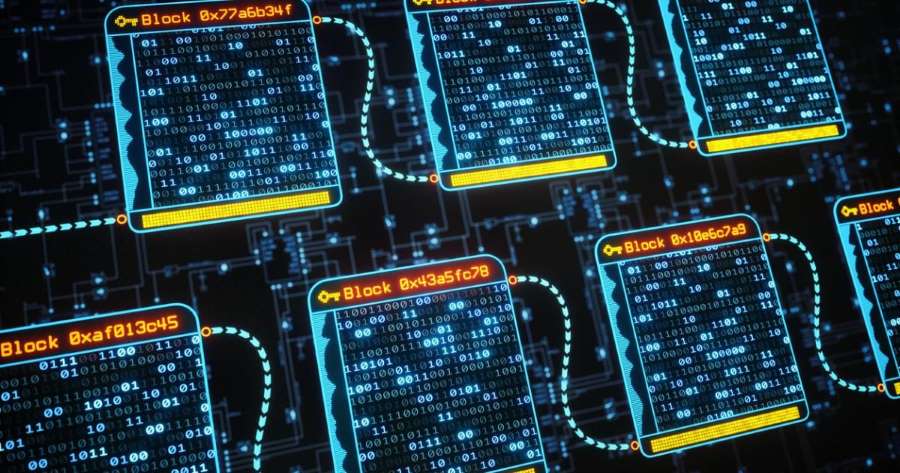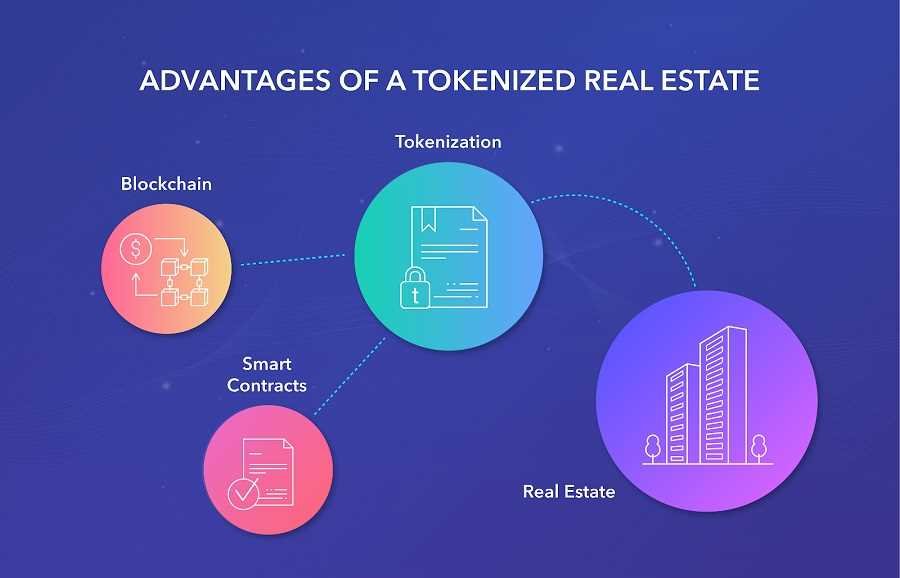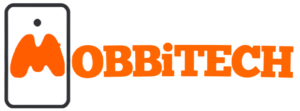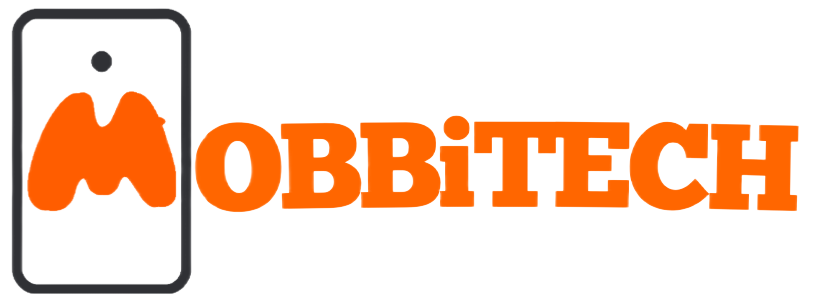Table of Contents
Why do middlemen play such a crucial role in so many businesses? Because they contribute to building trust. Even the simplest items require supply networks that involve numerous collaborating businesses and transactions. Intermediaries confirm crucial data when those businesses don’t know the party on the other side of the transaction. They make sure the buyer has the funds to make the purchase and the seller is authorized to sell. They attest to the clean transaction history as well. Of course, such advantages have a price. As a result, middlemen lengthen, complicate, and increase the cost of the transaction process.
But what if there was a less expensive and more effective middleman? Blockchain development services could provide corporations just that. This technology is quick, clear, and faultless. We shall discuss blockchain for business in this essay. Let’s examine how it functions and actual blockchain application cases, broken down by industry.
How Does Blockchain Work?

Blockchain is a system that uses encryption to store data. Each data record is compressed into a separate block that is protected by a hash, or individual digital signature. Each block also holds the hash of the one before it, forming a chain when put together. The data contained within a block and the block sequence itself are almost impossible to change once they have been recorded. A blockchain is now immutable as a result.
Blockchain can be used as a trustworthy source of truth for enterprises. Businesses can rely on technology to validate the legitimacy of papers, cut down on transaction fees, and prevent supplier fraud. Let’s look at an example to learn how it operates.
Consider a supermarket that uses blockchain to monitor the caliber of the things they purchase. Their blockchain system keeps track of every step a product takes from the farm to the retail shelf. The system records each stage of this process as a distinct block that includes the following information:
- Information concerning the transaction and the items, such as the amounts, the terms of shipment, and certification.
- A distinct digital signature known as the hash is used to identify blocks.
- Previous block digital signature.
Let’s find out what it offers. One day, a carrier was having trouble delivering raw veggies to a processing facility. They failed to maintain the required temperatures while being transported. The incident would have likely gone undiscovered in the presence of a conventional supply chain control system. However, the blockchain system keeps track of every action that the vegetables take on their way to the store and notifies them of any violations. As proof, these documents will be safely kept in the system. This indicates that the carrier will be accountable for claims made by buyers.
Due to anti-tamper features, it would be impossible even if the carrier intended to alter the record in the system. Let’s examine how they function:
Hashing
Every new occurrence in a blockchain is always recorded as a new block. As a result, changing the record is essentially impossible. Any attempt to change something in this situation will be noted as a new block with a unique digital signature. The carrier would have to tamper with the rest of the chain, which is quite a work because each subsequent block contains the hash of the prior block.
Proof-of-Work
However, imagine that the carrier is equipped with a potent quantum computer that can perform several thousand hashes per second. Recalculating the full hash chain in this instance is not a big problem. Blockchain, however, incorporates a proof-of-work system, which entails solving an arbitrary mathematical puzzle in order to add a new block. The production of fresh blocks is slowed by it. Therefore, if the carrier chooses to cheat, they will have to recalculate proof-of-work for every block after that. They will move more slowly as a result.
Peer-to-peer Network
The last obstacle to any attempt at cheating is this. There are many millions of monitoring sites in a peer-to-peer network. Every peer receives an exact duplicate of the blockchain. Each new block must be verified by them before they can accept it into the chain. Peer will halt block building if they discover any differences. As a result, the carrier would need to have complete control over the peer-to-peer network in order to register a modified block. practically unattainable
Therefore, the carrier would need to perform the following three actions in order to properly alter a blockchain:
- Tamper with each and every blockchain block
- Redo each block’s proof-of-work
- Over 50% of the peer-to-peer network under your control
Blockchains are trustworthy sources of truth because of these three techniques. As a result, the technology can take the place of a reliable third party that was once required for data verification.
Let’s move on to commercial use cases for blockchain technology and some actual instances of these use cases.

Blockchain in Retail: Making Authenticity Checks on Luxury Items
Two out of every five Americans are dissatisfied with their experience shopping for luxury goods. Half of them had purchased expensive products that turned out to be false. The remaining half are unsure if they purchased real goods. Brands suffer financial and client loyalty losses as a result.
In response, brands work to safeguard their intellectual property at additional expense. For instance, Mot Hennessy Louis Vuitton has at least 60 legal staff members. Additionally, the company spends $17 million a year on legal actions to stop counterfeiting.
Blockchain can be used to spot bogus goods. Brands may use blockchain to build a digital twin of every luxury item, give it a token, and use a barcode to connect it to the real thing. Customers can check the authenticity of the product by scanning the barcode with their smartphone.
Real Life Example: Diamond Provenance
De Beers, a major global diamond mining company, uses blockchain to demonstrate the provenance of each diamond it sells. The solution follows a diamond’s journey from its origin to every link in the value chain. This approach is used by De Beers’ dealers to guarantee the legitimacy of the diamonds they purchase. The technique also aids in persuading skeptical clients.
Benefits
Preventing counterfeiting
Blockchain verifies a luxury item’s provenance by following the product along the whole value chain.
Saving the reputations of brands
Transparency provided by the technology establishes the seller’s dependability.
Enhancing the client experience
Blockchain reduces the possibility of encountering fakes, improving the buying experience.

Blockchain in Healthcare: Rapidly obtaining credentials
When a hospital tells a doctor they have been employed, it doesn’t necessarily mean they can start working immediately away. A new physician must first go through the credentialing procedure, which is how hospitals make sure their new hires have the degrees, credentials, and experience they say they do. Healthcare facilities need time to verify the facts. It usually requires 90 to 120 days of calling and emailing. The hospital could suffer damages as a result of the doctor’s idleness. A healthcare facility could lose $7,000 to $10,000 per day in potential revenue as a result of administrative delays.
Blockchain could speed up the credentialing process in the following ways: A doctor first uploads records on the blockchain platform. When a job changes, the issuing institution only accesses it once to verify the information provided. In the end, a medical facility verifies the data, and the hospital may now officially welcome its new employee. This might save months of time.
Real Life Example: Verifying medical credentials
In order to validate the qualifications of their new hires, the Carilion Clinic in Virginia tested blockchain. For 17 residents, the clinic used a blockchain solution in addition to their regular workflow. They were able to quickly verify the data from primary sources as a result. They would have avoided losing $1.2 million in revenue if they had used blockchain for all of their hires.
Benefits
Expediting the verification of documents
Credentialing takes only a few minutes now thanks to blockchain technology.
Preserving lost money
Hospitals may now hire medical professionals more quickly thanks to technology.
Increasing new hires’ satisfaction
Due to administrative delays, they no longer need to wait around for months.
Blockchain and intellectual property: Making Patent Transactions More Simple
Any patent transaction, whether it be an acquisition, a license, or a pledge, needs to be done with appropriate care. This procedure confirms the ownership rights and the reach of the patent. Due diligence can show whether a patent purchase by an owner violated the rights of third parties. This approach typically takes a lot of time and money.
Blockchain can expedite and streamline due diligence. The technology can be used to establish intellectual property registers (IP). Every event that occurs throughout an IP’s lifetime is recorded and made available to the parties as proof. IP registries, for instance, might provide details on the dates a trademark was originally filed for, registered, and utilized commercially.
Real-Life Example: Patent Trade Simplification
IPwe developed a marketplace for IP on the blockchain. Businesses can tokenize their patents and then exchange them as NFTs thanks to this. Additionally, based on the patent paperwork, the solution provides summaries and reports and leverages AI for rapid patent examination.
In general, the market streamlines and lowers the cost of patent transactions. The product aids customers in identifying the most worthwhile buying options and minimizing business risks. As a result, sellers will have a better understanding of how they differ from their rivals.
Benefits
Increasing transparency
Every event in a patent’s life may be verified thanks to blockchain technology.
Lowering transactional expenses
By doing away with due diligence, the technology simplifies and reduces the cost of transferring patents.
Blockchain in Real Estate: Identifying Investors for Pricey Properties

It takes a while to find investors for pricey properties. The primary justification is their cost: high-end properties can go into millions of dollars. Private placement is the quickest approach to raise the needed amount of money. Instead of placing shares up for sale on the open market, an owner uses this approach to sell them to reliable investors. Building owners can escape onerous regulatory and reporting responsibilities as a result.
Private placements, however, are typically out of the price range of many investors. First off, the standard minimum is still quite large ($50–100k). Second, investors must nearly always make a long-term commitment to participate in private placements, which can last anywhere between five and ten years.
Owners can tokenize their properties to make real estate investment more affordable for small-scale private investors. In order to do this, they partition a property into virtual components and establish the value of each one separately. Then, investors purchase the tokens, taking joint ownership of the sold property. This enables the owners to increase the number of investors and accelerate the sale of buildings. Additionally, blockchain can do away with the need for banks, lawyers, and even brokerage commissions.
Real-Life Example: Quicker Sale of a Luxury Building
Paris’s Villa AnnA is an opulent structure worth €6.5 million. The building’s owners made the decision to partition the structure into 100 shares and distribute them among themselves in order to sell the building more quickly. Each share will be further divided into 100,000 tokens, each of which will be sold for €6.5.
The coins will adhere to French monetary and financial regulations. The holder of each token will have access to financial data, voting rights, dividends, and participation rights.
The owners will use blockchain to store official records like notarized deeds and identity evidence. They hope to avoid the expense and effort involved in manually verifying investment information by doing this.
Benefits
Speedier investment attraction
Blockchain has the potential to open up investment to smaller investors as well.
Speeding up the transactional procedure
There is no need to manually check the investors’ details.
Blockchain in Transportation: Exchange of Takeoff Slots
Airlines incur additional expenditures due to flight delays. Passengers must receive recompense, and crew members must occasionally change. Depending on the location of the flight and the length of the delay, prices may change. Airlines give some flights the highest priority while delaying others to minimize financial losses. They must locate an appropriate open runway takeoff slot in order to accomplish this. However, there isn’t much potential for such tricks because slots are typically only traded between planes of the same airline for security reasons.
Another possibility is to set up slot swaps between various airlines. In this situation, they would have to reveal private information regarding flight expenses to a dependable third party. The mediator would then verify it and choose the best slot for each airline. As a result, airlines would have more alternatives for cost optimization. The issue is that airlines are reluctant to divulge their trade secrets to rivals.
Blockchain can use multi-party computing to make slot exchanges private (MPC). This approach conceals information about the input data, executes calculations in private, and encrypts data. Airlines can participate in slot exchanges without running any risks as a result.
Real-Life Example: Facilitating the exchange of slots between various airlines
The first blockchain-based marketplace for airlines to trade runway takeoff slots is called SlotMachine. The approach makes use of multi-party computation, which enhances data privacy. As a result, no airline can access the data of other businesses to discover what their rivals are bidding on or how many slots other airlines have made available.
The platform is still being developed. When ready, it should decrease delays and boost airport productivity.
Benefits
Minimizing losses for airlines
Airlines will be able to prioritize flights more freely if there are more slots available.
Preserving the privacy of trade secrets
Airlines don’t need to be concerned that competitors will obtain their information.
Improving airport performance
Resources at the airport will be deployed more effectively, cutting down on delays.
End Note
Because of cryptocurrency speculation, Blockchain sprang to fame. But despite this, because of its incorruptible nature, it can nevertheless offer genuine value to enterprises. Blockchain serves as a reliable middleman, but it is also more effective and less expensive. Businesses utilize it to expedite due diligence and locate investors. The technology also protects trade secrets while guaranteeing a deal’s fairness. Businesses may improve operations and cut expenses in each of these scenarios.
Also Read: How Do I Pick the Best Platform for Exchanging Cryptocurrencies?

